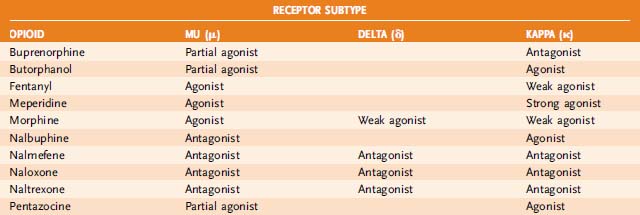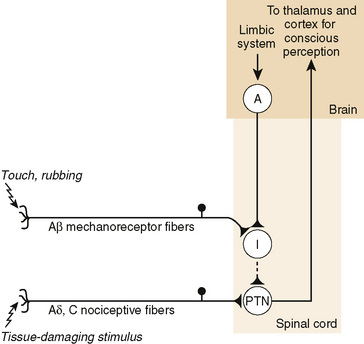Chapter 19 Opioid Analgesics and Antagonists
a. The effects of endogenous opioid peptides (endorphins and enkephalins) and exogenous opioids result from activation of specific opioid receptors (Table 19-1).
b. Opioid analgesics activate the intrinsic analgesic system (endogenous pain control system; Fig. 19-1).
(1) Electrical stimulation of the midbrain periaqueductal gray (PAG) produces analgesia without affecting fine touch.
(4) Enkephalin interneurons inhibit presynaptic nociceptor terminals and posterior horn pain transmission neurons.
(5) Morphine suppresses input from pain fibers; this can be reversed by the opioid antagonist naloxone.
BOX 19-1 Opioid Agonists
Strong Opioid Agonists
Fentanyl (parenteral, transdermal, transmucosal)
Hydromorphone (parenteral, oral)
Levorphanol (parenteral, oral)
Morphine (parenteral, oral, rectal)
TABLE 19-2 Opioid Receptors and their Associated Effects
| Receptor | Effects of Activation |
|---|---|
| Mu (µ) receptor | Analgesia, euphoria, respiratory depression, miosis, decreased gastrointestinal motility, and physical dependence |
| Kappa (κ) receptor | Analgesia, miosis, respiratory depression, dysphoria, and some psychomimetic effects |
| Delta (δ) receptor | Analgesia (spinal and supraspinal) |
BOX 19-2 Pharmacologic Actions of Opioid Agonists
Stay updated, free articles. Join our Telegram channel

Full access? Get Clinical Tree




